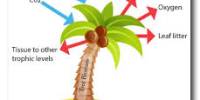If you’ve ever visited a city’s central hub in the middle of summer, you know how oppressive the heat can be, especially when compared to the surrounding area. Civil engineering is a branch of engineering that deals with the design, construction, and maintenance of the physical and naturally created environment, such as roads, bridges, canals, dams, airports, sewage systems, pipelines, building structural components, and railways.
The Urban Heat Island (UHI) effect describes how temperatures in cities are several degrees warmer than in rural areas. In practically every populated continent, many towns have been found to be 2-4oC warmer than the countryside.
This occurs because urban infrastructure, particularly pavements, absorbs a lot more heat than natural vegetated surfaces. Heat pollution raises the expense of air conditioning and water, as well as posing a public health risk.
Much of what defines modern civilisation is found in the built environment. Buildings and bridges are generally the first structures that come to mind since they are the most visible creations of structural engineering, one of the primary sub-disciplines of civil engineering.
Gray infrastructure is a mitigation method that involves modifying impermeable surfaces (walls, roofs, and pavements) to counteract their traditional heating effect. The solar reflectance (albedo) of typical urban surfaces is 0.20, which means they reflect just 20% of sunlight and absorb up to 80%.
It’s important for the health of the planet and its people that we find a way to mitigate the heat produced by urban infrastructure. Strategically placed reflective surfaces could maximize the mitigation of heat pollution while using minimal resources.
Lev Khazanovich
Reflective concrete and coatings, on the other hand, can be tailored to reflect 30-50 percent or more. Cities such as Los Angeles have already utilized reflective coverings on important streets to mitigate heat pollution, however implementing the solution city-wide can be costly.
Civil engineering can be found in the public sector, ranging from municipal public works departments to federal government agencies, as well as in the private sector, ranging from small businesses to Fortune 500 corporations. Transportation engineers, a subset of civil engineers, design highways, trains, subway systems, and airports.
Researchers from the University of Pittsburgh’s Swanson School of Engineering developed a Computational Fluid Dynamics model to figure out how to cut costs while increasing the use of cooler surfaces.
The study, which was published in the journal Nature Communications, looked at the prospect of putting cooler surfaces to half of a city’s surfaces.
“This could be an effective solution if the surfaces selected were upstream of the dominant wind direction,” said lead author Sushobhan Sen, postdoctoral associate in the Department of Civil and Environmental Engineering.
“A ‘barrier’ of cool surfaces preemptively cools the warm air, which then cools the rest of the city at a fraction of the cost. On the other hand, if the surfaces are not strategically selected, their effectiveness can decline substantially.”
This study provides an extra method for urban planners and civil engineers to create resilient and sustainable infrastructure with minimal resources.
“It’s important for the health of the planet and its people that we find a way to mitigate the heat produced by urban infrastructure,” said coauthor Lev Khazanovich, the department’s Anthony Gill Chair Professor of Civil and Environmental Engineering.
“Strategically placed reflective surfaces could maximize the mitigation of heat pollution while using minimal resources.”
Civil engineering is an interesting field to work in because you can see the results of your efforts at the end of the day, whether it’s a finished bridge, a high-rise structure, a subway station, or a hydroelectric dam.
















